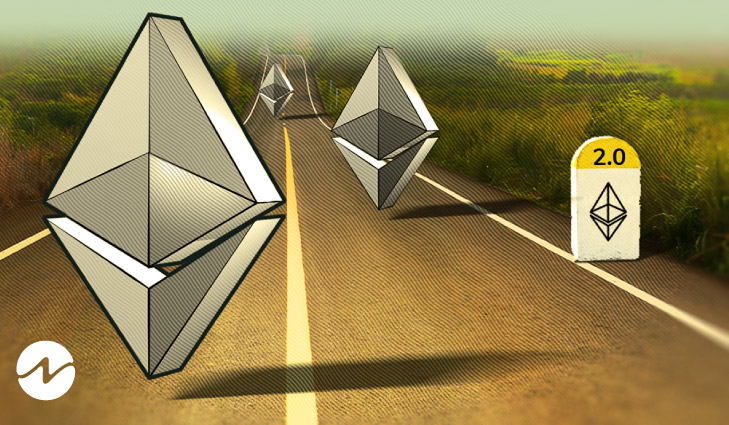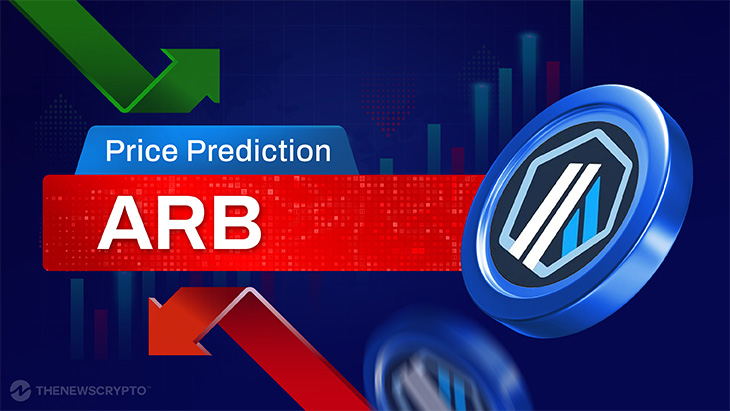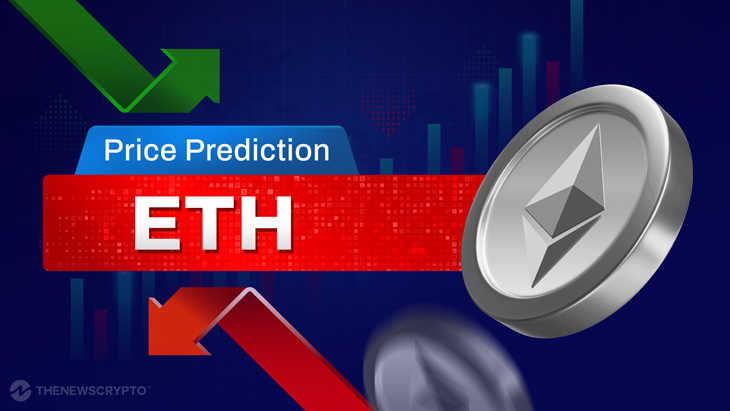A tragic storm of wild crashes, insolvency crises, scams, lawsuits, and regulatory threats has had a baneful effect on the entire crypto and DeFi space since early 2022. These events shook the crypto community with terror. Sadly, there is no reset button or a forgetfulness potion to wipe those off from our memory.
But despite all this, the crypto world now anticipates the biggest and most significant event, ‘the Ethereum Merge.’ Supposedly, this transition event appears to offer a beacon of hope amid this crypto winter.
What is The Merge about? How did this begin? When is it going to happen? And What will happen to Ethereum after this upgrade? To get to know the answers, it becomes prominent to re-learn the whole process right from its origin.
Before taking a deep dive into the Ethereum 2.0 journey, there is one crucial point that the crypto community should have in mind. That is, Ethereum 2.0, also known as The Merge, is not like a normal hard fork instead it is the transition of the Ethereum blockchain from proof-of-work (PoW) to proof-of-stake (PoS) consensus. Simply put, it’s just Ethereum’s consensus makeover. This upgrade facilitates a merger between the PoW-based Ethereum mainnet and the PoS-based Beacon Chain.
Flashback: The Inception of Ethereum Merge
The groundwork for formulating The Merge plan began quite early. Switching from energy-intensive PoW to energy-efficient PoS was more preferred by the developers themselves way back in 2015 after the protocol’s launch. A three-phased roadmap was proposed for the Ethereum 2.0 upgrade. It began with Phase 0 with the launch of the Beacon Chain in December 2020.
The Beacon Chain is a parallel blockchain with the proof-of-stake (PoS) consensus system and continued to co-exist with the Ethereum Mainnet. The former, Beacon Chain, was tagged as Eth1 and the latter as Eth2.
The team stated:
“The Merge represents the official switch to using the Beacon Chain as the engine of block production. Mining will no longer be the means of producing valid blocks.”
Rayonism, an R&D project solely dedicated to the Ethereum 2.0 or The Merge upgrade, began in March 2021. Under this project, a month-long hackathon named ETHGlobal Scaling Hackathon brought in all the Eth1 and Eth2 clients to build testnets to initiate the trial of the PoS system on them. These testnets mimicked the entire infrastructure of the Ethereum Mainnet and exist as the compatible PoS testing environment. Steklo, the first Ethereum 2.0 testnet was launched during the hackathon.
The first Ethereum 2.0 Testnet #Steklo was launched today with 3 Eth1 clients (Besu, Geth and Nethermind) and 4 Eth2 clients (Teku, Prysm, Lighthouse and Nimbus).
— SajZ 🦇🔊🐼 (@sajidazouarhi) April 30, 2021
This is a first successful step towards a Proof-of-Stake #Ethereum.#Rayonism☀️ pic.twitter.com/j8d4cKaxIH
Kiln, Rinkeby, Ropsten, Sepolia, and Goerli were prominent testnets whose upgrade is recorded as milestones towards achieving the true PoS transition.
Furthermore, there are four forks and technical upgrades that laid a firm foundation for the Ethereum Merge. Firstly, in August 2021, the London Hard Fork, incorporated significant Ethereum Improvement Proposals (EIPs) such as EIP 1559 to update the fee mechanism on Ethereum.
Secondly, in October 2021, the Altair upgrade was the first upgrade to be implemented on the Beacon Chain. It introduced the penalties on validators nodes’ inactivity.
The third and fourth upgrades, Arrow Glacier and Gray Glacier, which took place in December 2021, and June 2022 respectively, delayed the “Difficult Bomb” before The Merge.
Notably, the difficulty bomb is responsible for the Ice Age of Ethereum’s PoW engine. This code is responsible for increasing the complexity of the mining mechanism on the PoW blockchain. Thus, the difficulty bomb is introduced within the protocol in 2015 to push miners to abandon mining and switch to staking. The developers have delayed the difficulty bomb until the completion of the transition.
The upgrades in the three major public testnets, Ropsten, Sepolia, and Goerli, commenced between June to August. With the final testnet merge, Goerli, the Ethereum protocol’s schedule is finalized.
What Happens During The Merge?
All the three prominent testnet mergers: Ropsten, Sepolia, and Goerli, made the Ethereum network advance towards the actual Merge transition. As per Ethereum’s core developers, The Merge upgrade will eventually rollout through two sequential upgrades, namely, Bellatrix and Paris. These two upgrades will commence on the two parallel layers, the Consensus, and Execution layer, of Ethereum that are soon to be merged.
Danny Ryan, Researcher at Ethereum Foundation, stated:
“Bellatrix upgrades the Beacon Chain to be ‘Merge aware.’… Paris is the Merge transition itself.”
- Bellatrix Upgrade
The Bellatrix upgrade is responsible for getting the Beacon Chain, also known as the Consensus Layer, ready for The Merge. This upgrade prepares the Beacon chain for undergoing the final transition by embedding it with the Merge logic.
The validators on the Beacon Chain, formerly known as the Eth2 layer, continue to monitor the PoW chain. Also, during this upgrade, the PoW nodes are upgraded into the “EL + CL Merge-ready nodes.”
- Paris Upgrade
The Paris upgrade will be initiated on the Ethereum PoW Mainnet, also known as the Execution Layer. This upgrade represents the exact Merge transition where the PoW consensus is switched to the PoS consensus. Moreover, the Paris upgrade demands the validators network to upgrade the system configuration.
Important Ethereum client engineers held a discussion on the recent Consensus Layer Call on August 10 to estimate the schedule for the Merge and its associated criteria. When the consensus layer reaches the epoch 144896, the Bellatrix upgrade is triggered and is estimated to occur by September 6.
When the execution layer reaches a terminal total difficulty (TTD) of 58750000000000000000000, the Paris upgrade commences and its completion marks the end of The Merge. As per the estimation, the transition is about to commence by September 15. Thus, it is the actual schedule of The Merge.
On successful completion of The Merge, the era of proof-of-work (PoW) ends for the Ethereum protocol. The existing mining pools, such as Ethermine, will eventually transition to staking pools.
What Happens To Ethereum After The Merge?
The successful Merge upgrade will mark the start of an era of enhanced scalability and energy efficiency for the Ethereum blockchain. After The Merge, the energy consumption of the Ethereum blockchain will be cut down nearly by 99.95%.
The Merge does not focus on enhancing the transaction throughput or expanding the network capacity. Ethereum blockchain is demarcated into two layers, execution and consensus layers. Importantly, Ether (ETH) becomes a deflationary token post-merge. The developers stated the ETH issuance will drop by “roughly 0.6 million” per year.
Shanghai Upgrade will go live following The Merge transition. This upgrade will enable stakers to withdraw their staked ether (ETH) locked in the Beacon Chain.
According to the Ethereum development roadmap published by co-founder Vitalik Buterin, The Surge, The Verge, The Purge, and The Splurge is queued up after The Merge. It is purely a rollup-centric roadmap.
Happy birthday beacon chain!
— vitalik.eth (@VitalikButerin) December 2, 2021
Here's an updated roadmap diagram for where Ethereum protocol development is at and what's coming in what order.
(I'm sure this is missing a lot, as all diagrams are, but it covers a lot of the important stuff!) pic.twitter.com/puWP7hwDlx
The Surge is aimed at integrating the sharding functionality on the Ethereum blockchain. Sharding is a mechanism by which the transaction data of the mainnet is fragmented into small chunks and distributed to the side-chains a.k.a shards. This would enhance the network’s speed and efficiency. The developers estimate PoS transition and sharding to be truly live on Ethereum by 2023.
The Verge marks the phase of incorporating verkle trees schemes, an advanced version of Merkle tree proofs, within the Ethereum protocol. The next phase, The Purge, is sort of a cleanup phase that is aimed at establishing state expiry and eliminates the historical data of the Ethereum Vending Machine (EVM).
Finally, The Splurge is the phase of “all of the other fun stuff.” This phase focuses on identifying and fixing all the flaws of the previous upgrades. Eventually, the completion of The Splurge would mark the origin of Ethereum with more scalability and efficiency.
Here are Some Mythbusters of The Merge
Let’s clear some misconceptions related to the upcoming Ethereum Merge.
- No Reduction in the Gas Fees
After The Merge, there will be no reduction in the popular gas fees, which users pay to conduct a transaction on Ethereum. In general, the gas fees, denoted by Gwei, are paid in ether (ETH). It is the “product of network demand relative to the capacity of the network.”
The Merge upgrade is merely the transition of the protocol’s consensus mechanism and not the expansion of its network capacity and throughput. Thus, in no way, this upgrade is going to cause a reduction in the gas fees.
- No Noticeable Increase in the Transaction Speed
On the PoW-based Ethereum mainnet, a new block is released every 13.3 seconds. On the other side, on the PoS-based Beacon Chain, it takes nearly 12 seconds to release a new block via the chosen slot. The Ethereum developers predict that the block production on the PoS consensus engine would be increased by nearly 10% over that of the PoW system. They also believe that this increase will go unnoticed by the users of the blockchain.
- To Become a Node on Ethereum, Staking 32 ETH Is Not Mandatory
Not every node on the Ethereum blockchain requires the users to stake ether tokens. Within the network, all the nodes fall into two broad categories: block-producing, and non-block-producing nodes.
Previously on the PoW consensus, the nodes involved in block production stake 32 ETH and contribute specific computational energy and power (i.e, GPU hash power). The rest of the non-block-producing nodes participate in conferring security, privacy, and censorship resistance to the network. To run these nodes, users do not have to stake any tokens or resources. This remains the same “before The Merge, after The Merge, ever.”
Users running non-block-producing nodes will just need a compatible computer with 1-2TB storage and a proper internet connection.
- No Downtime in the Ethereum Blockchain
The Ethereum developers and clients ensure that there would be no disruption in the network’s functionality during or after the upgrade.
The developers commented:
“The Merge is like changing an engine on a rocketship mid-flight and is designed to be performed without needing to pause anything during the switch.”
On reaching certain criteria, that is, when epoch 144896 and a certain total terminal difficulty (TTD), the transition will commence. There may be no possible downtime in the network.
- Staked ETH Withdrawals Not Be Enabled Just After the Merge
The staked ether (stETH), and staking rewards are not available for withdrawals as soon as the Merge completes. Only after the Shanghai upgrade, the stETH tokens can be withdrawn, and until then it remains locked on the Beacon Chain. The estimated locking time for the newly issued ETH tokens is 6-12 months after The Merge. Only after this period, these can be withdrawn.
The developers also highlighted one more condition. That is, soon after enabling withdrawals, stakers who opt to exit and withdraw cannot do it at the same time. Only six validators can exit in a given epoch which denotes a 6.4-minute period, and on average, only 1350 per day.
- Validators Will Have Access to Fee Rewards/MEV
Although newly issued ETH and stETH remain locked, validators will still have an access to the fee rewards/maximal extractable value (MEV) earned through block proposals. Users pay ETH as gas fees to execute transactions on the mainnet and this also covers a tip for the validators too. As these tokens are not being newly issued, validators can avail them.
The most-awaited major Ethereum upgrade is all set for September 15 and it does hold risks and pros. The Ethereum developers have put in a huge work to ensure a seamless transition and a true PoS is expected to roll out by 2023.
Recommended For You








